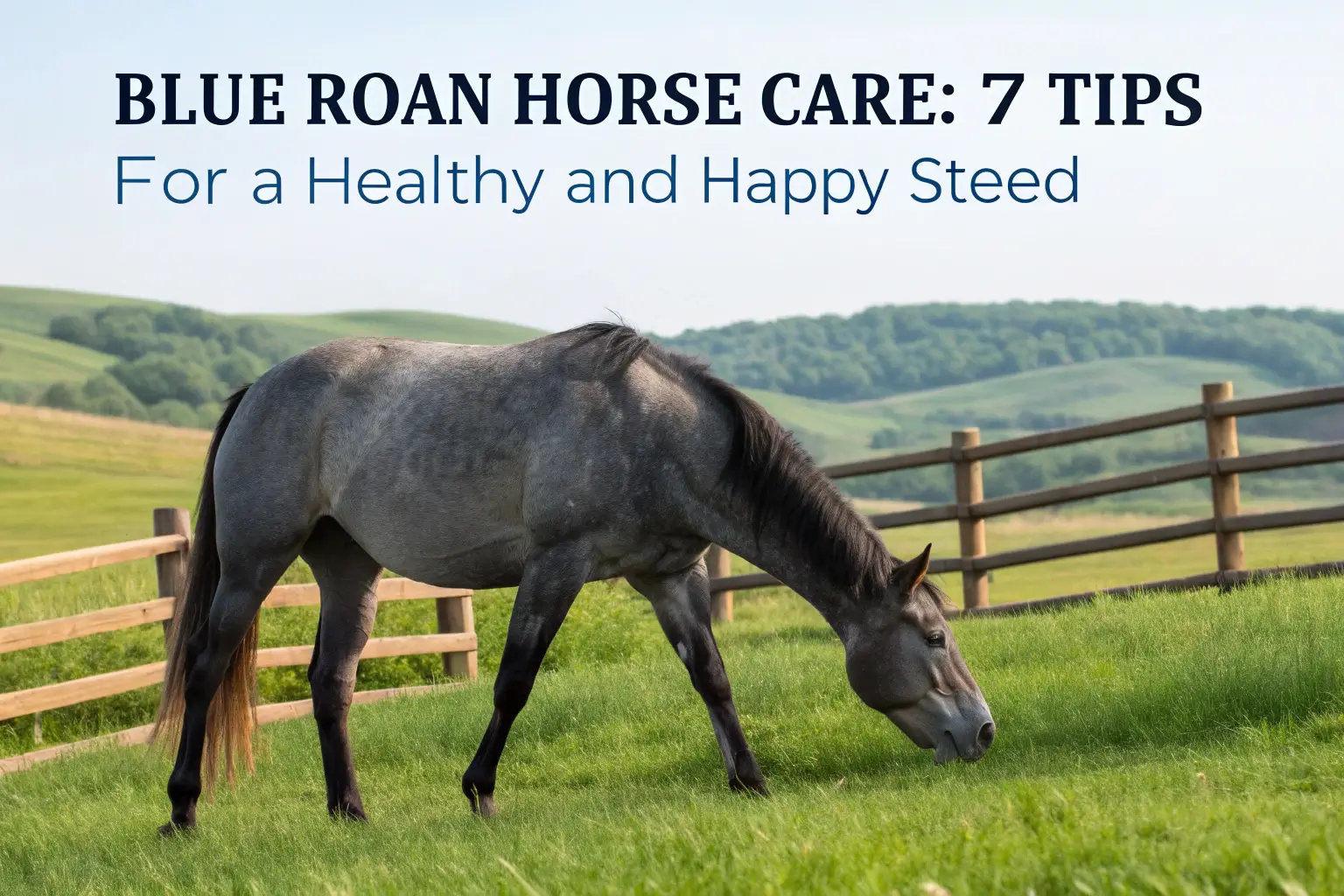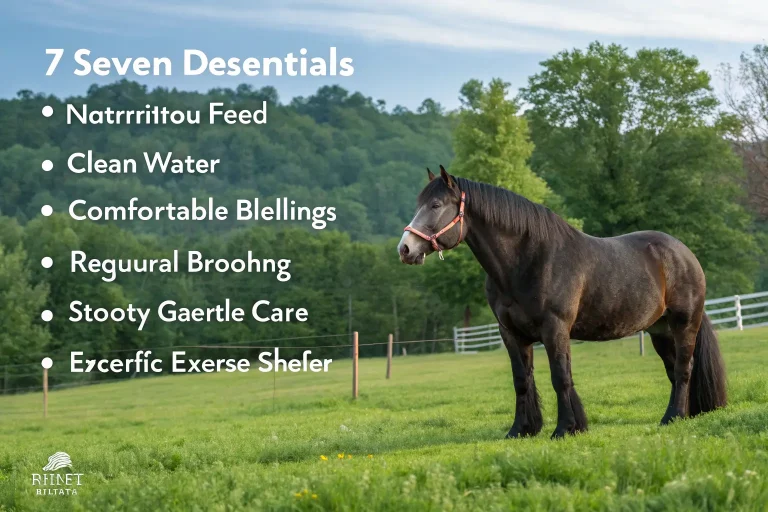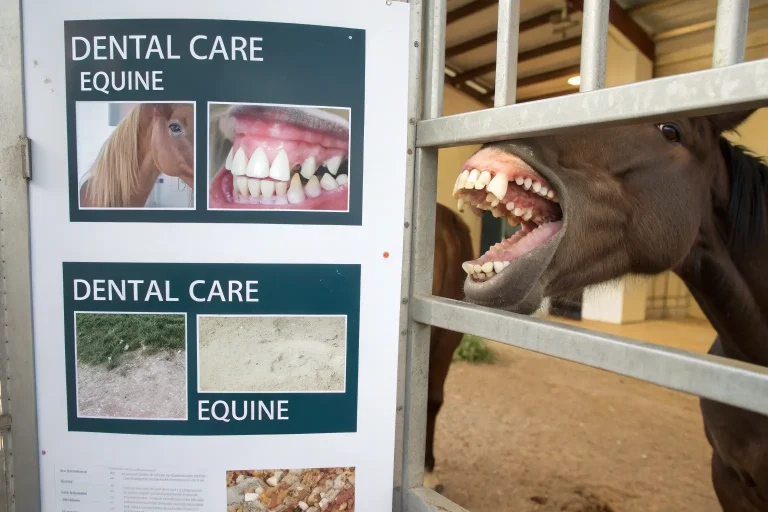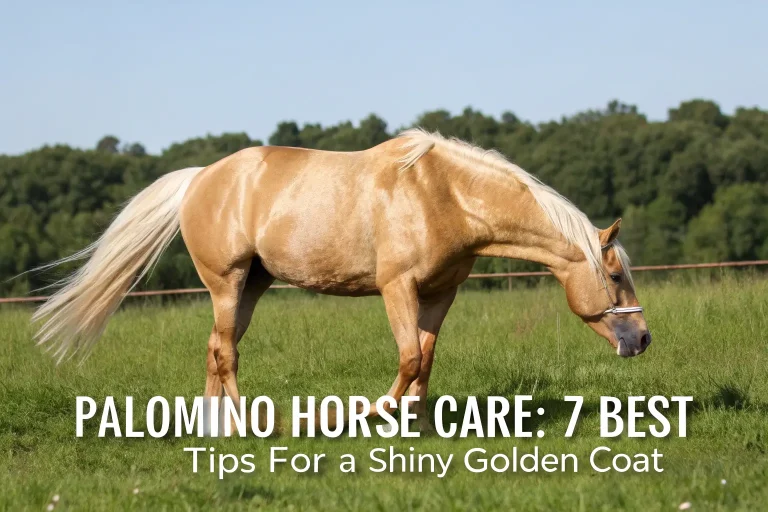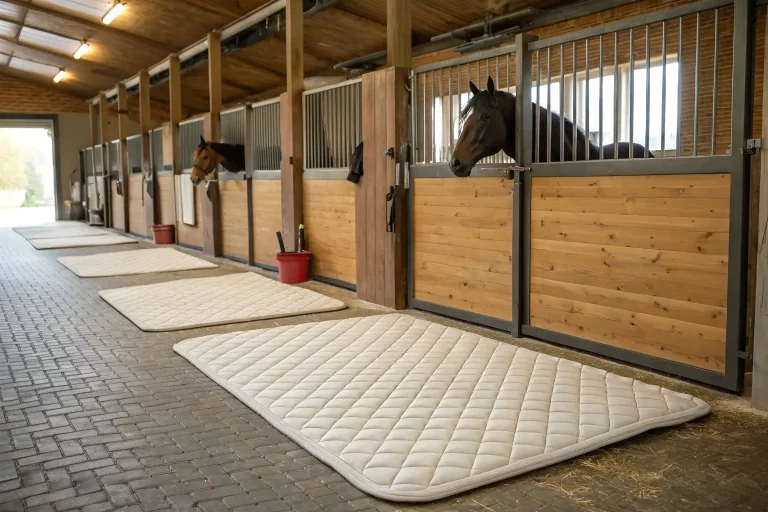Blue Roan Horse Care: 7 Tips for a Healthy and Happy Steed
The stunning blue roan horse, with its unique mixture of black and white hairs creating that distinctive blue-gray appearance, is one of the most visually striking equine color patterns in the world. These magnificent creatures combine beauty with versatility, making them popular choices for riders across various disciplines from Western riding to dressage. Caring for a blue roan horse requires understanding both their specific coat maintenance needs and general equine health principles.
Whether you’re a new blue roan owner or considering adding one to your stable, proper care is essential for ensuring your horse remains healthy, happy, and maintains that gorgeous roan coloration that turns heads at every show. Interestingly, a blue roan’s coat can change dramatically with the seasons – appearing darker after shedding and lighter when the white hairs become more prominent during summer months.
Species Overview
Scientific Classification
The blue roan horse isn’t a separate breed but rather a color pattern found in various equine breeds. Scientifically, all domestic horses belong to the species Equus ferus caballus. The blue roan coloration is a genetic trait that follows specific inheritance patterns.
Physical Characteristics
A true blue roan horse features a coat mixture of black and white hairs evenly distributed throughout the body, creating the characteristic steel-blue or gray appearance. Their head, lower legs, mane, and tail typically remain darker or completely black. Blue roans stand between 14-17 hands high (56-68 inches at the withers), depending on their breed. The most distinctive feature of blue roans is how their coat changes with the seasons – often appearing darker after shedding and displaying a more vivid blue-gray appearance when their summer coat comes in.
Unlike gray horses that progressively lighten with age, blue roans maintain their distinctive coloration throughout their lives, though seasonal variations occur. Their striking appearance comes with unique skin characteristics – blue roans typically have dark skin beneath their coat, which helps distinguish them from other roan variations.
Blue Roan Variations
Blue roan coloration appears in numerous horse breeds, including Quarter Horses, Percherons, Belgian Draft horses, Tennessee Walking Horses, and Paso Finos. Each breed combines the blue roan coloration with their specific conformation characteristics. Some registries recognize specific variations like “blue roan overo” or “blue roan tobiano” when the roan pattern combines with pinto markings.
Habitat and Distribution
Natural Environment
Blue roan horses, like all domestic equines, thrive in open pastures with access to shelter from extreme weather. They adapt well to various climates but prefer moderate temperatures. These horses need ample space for exercise – a minimum of 1-2 acres per horse is ideal for maintaining physical and mental health.
Geographic Presence
The blue roan color pattern appears in horse populations worldwide, with particular prominence in North American stock horse breeds. Quarter Horses and their derivatives have significant blue roan populations, especially in Western riding disciplines. In Europe, several draft horse breeds showcase beautiful blue roan specimens, particularly in France and Belgium.
Adaptations
Blue roans possess several adaptations that help them thrive in different environments. Their coat changes seasonally, growing thicker in winter for insulation and shedding to a lighter summer coat that helps with cooling. The dark skin beneath their coat provides natural protection against sunburn and skin cancer, an advantage over some lighter-colored horses. Many blue roans also inherit the sturdy, adaptable characteristics of their base breeds, whether that’s the endurance of stock horses or the power of draft breeds.
Diet and Feeding Habits
Nutritional Requirements
A blue roan horse requires the same basic nutritional foundation as any equine: high-quality forage supplemented with appropriate concentrates based on workload and individual needs. The average 1,000-pound blue roan needs:
- 15-20 pounds of hay or equivalent pasture daily
- Access to fresh, clean water (10-12 gallons daily)
- Salt and mineral supplementation
- Concentrated feeds as needed based on activity level
Grazing Behavior
Blue roans, like all horses, are natural grazers that prefer to eat small amounts frequently throughout the day. Their digestive systems are designed for continuous processing of fibrous materials. In natural settings, horses spend 16-20 hours daily grazing, moving continuously as they eat. Mimicking this natural feeding pattern through free-choice hay or adequate pasture time supports digestive health and reduces behavioral issues.
Special Dietary Considerations
While blue roans don’t have breed-specific dietary requirements, owners should be aware that the quality of nutrition directly impacts coat color and shine. Proper protein levels (10-12% for maintenance, higher for working horses) and adequate mineral intake, particularly copper and zinc, contribute to vibrant coat coloration. Some blue roans may have breed-specific considerations – draft crosses may be more prone to metabolic issues requiring careful diet management, while performance-bred individuals need nutrition tailored to their athletic demands.
Behavior and Social Structure
Social Dynamics
Blue roan horses, like all equines, are naturally herd animals that thrive on social interaction. They establish clear hierarchies within groups and communicate primarily through body language. Isolation can lead to stress and behavioral problems, so companionship – whether equine or another compatible species – is essential for their mental wellbeing.
Communication Methods
Blue roans communicate through a sophisticated repertoire of ear positions, facial expressions, body postures, and vocalizations. A blue roan with pinned ears signals irritation or aggression, while forward ears indicate interest. Their social nature means they’re highly attuned to human body language as well, responding to subtle changes in your posture or breathing that you might not even realize you’re displaying.
Reproduction and Lifespan
The blue roan coloration results from a dominant roan gene (Rn) combined with a black base coat. When breeding for blue roans:
- At least one parent must carry the roan gene
- The foal must inherit the black base coat gene
- Breeding two roans together can occasionally produce “lethal white” foals with fatal intestinal abnormalities
Blue roans share the typical equine gestation period of approximately 11 months. Their lifespan ranges from 25-30 years with proper care, though individual longevity varies based on genetics, care quality, and use.
Conservation Status
Population Status
Blue roan horses are not endangered; the coloration appears across numerous healthy horse breeds worldwide. However, the roan gene’s distribution varies by breed, with some having higher concentrations of roan individuals than others.
Genetic Considerations
While blue roans themselves aren’t rare, certain genetic factors warrant consideration:
- The homozygous roan gene combination is believed to be lethal in embryonic development
- Preserving genetic diversity within color patterns helps maintain healthy populations
- Some breed registries have historically limited color registrations, though most now accept blue roans
Preservation Efforts
Several breed associations maintain specialized programs documenting and preserving distinctive color patterns, including blue roan. Organizations like the Blue Roan Horse Association and breed-specific color registries work to document, promote, and preserve the blue roan pattern through careful breeding programs and educational outreach.
Interesting Facts
- True blue roans are born their base color (black for blue roans) and develop their distinctive roan pattern during their first shedding.
- The blue roan pattern creates an optical illusion – from a distance, the intermixed white and black hairs create the blue appearance, though no actual blue hairs exist.
- Unlike gray horses that progressively lighten with age, blue roans maintain consistent coloration throughout their lives.
- Many blue roans exhibit a phenomenon called “corn spots” or “reverse dappling” – small, round patches of solid base color scattered across their bodies.
- The blue roan coat often appears to change color dramatically with the seasons or when wet.
- Blue roan horses were particularly prized in the American West as cowboys believed their toughness and endurance exceeded solid-colored horses.
- The blue roan pattern can sometimes be confused with grulla coloration, though they result from entirely different genetic mechanisms.
Tips for Caring for a Blue Roan Horse
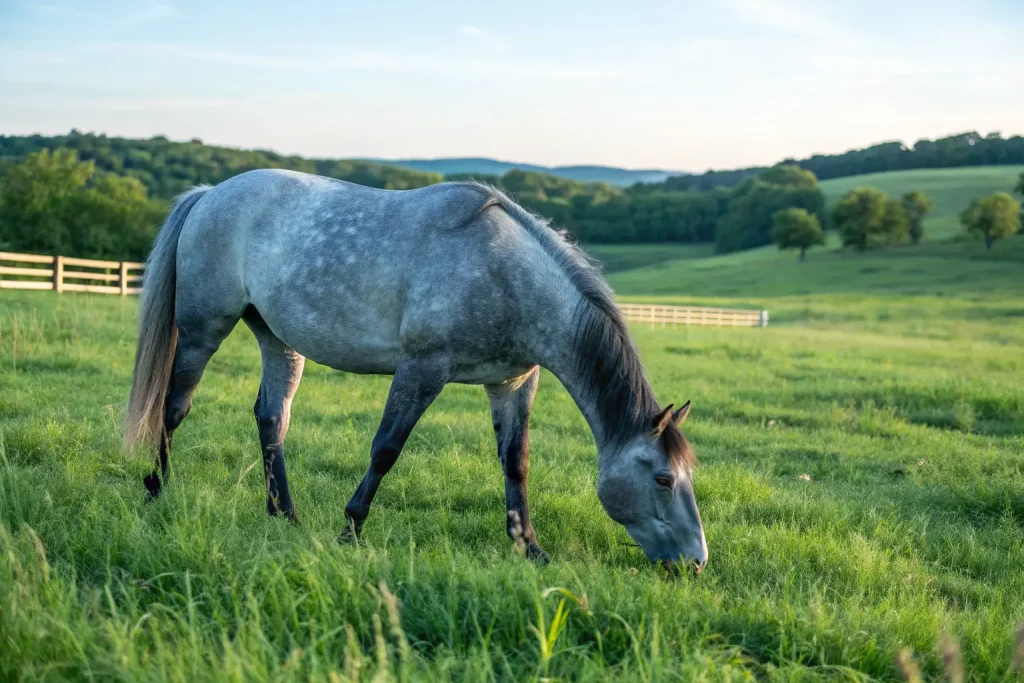
1. Specialized Coat Care
The distinctive blue roan coat requires specific maintenance approaches:
- Groom regularly with appropriate tools – soft brushes preserve the natural oils that give the coat its shine
- Limit harsh shampoos that can strip these oils; opt for color-enhancing formulas when bathing
- During shedding season, daily grooming helps accelerate the process and reveals the new coat faster
- Use UV-protective sheets during peak sun hours to prevent coat bleaching
- Apply coat supplements containing omega fatty acids, biotin, and zinc to enhance color vibrancy
Blue roans often display more noticeable dandruff due to the contrast between dark skin and light hairs, making regular skin care essential. During winter, their thicker coats may mask weight changes, so hands-on body condition scoring becomes even more important.
2. Nutrition Management
Proper nutrition forms the foundation of blue roan health:
- Provide consistent access to high-quality forage (pasture or hay)
- Balance concentrated feeds according to workload and metabolic needs
- Include omega-3 fatty acids through flaxseed or specialized supplements for coat health
- Ensure complete mineral profiles, particularly copper and zinc, which influence coat color
- Monitor weight regularly, as the roan pattern can sometimes mask body condition changes
- Adjust feed seasonally to account for changing energy requirements
The quality of your blue roan’s diet directly impacts not only their health but also the vibrancy of their unique coat coloration. Weight management is particularly important as excess weight stresses joints and can lead to metabolic issues in predisposed individuals.
3. Exercise and Mental Stimulation
Blue roans, regardless of their breed background, need regular exercise for physical and mental wellbeing:
- Provide daily turnout whenever possible – minimum 4-6 hours in suitable weather
- Establish a consistent exercise program appropriate to your horse’s age, condition, and training
- Incorporate variety to prevent boredom – trail rides, arena work, ground exercises
- Use enrichment tools like treat balls, different forage types, or obstacle courses during confined periods
- Consider the breed traits underlying your blue roan – draft crosses need different exercise than Quarter Horse types
Regular, appropriate exercise prevents obesity, maintains muscle tone, supports cardiovascular health, and prevents destructive behaviors born from boredom or excess energy.
4. Health Monitoring and Preventative Care
Proactive health management keeps your blue roan thriving:
- Schedule regular veterinary check-ups (minimum annually, semi-annually for seniors)
- Maintain current vaccinations based on regional risks and exposure
- Implement parasite control through strategic deworming and manure management
- Practice regular hoof care with farrier visits every 6-8 weeks
- Conduct daily health checks noting changes in appetite, manure, behavior, or movement
- Schedule regular dental examinations appropriate to your horse’s age
Blue roans benefit from the same preventative measures as all horses, with special attention to skin conditions that may be more visible against their unique coat pattern. Sunburn prevention is particularly important for any pink-skinned areas.
5. Environment and Housing
Create optimal living conditions for your blue roan:
- Provide shelter from extreme weather – run-in sheds or stalls with good ventilation
- Maintain clean, dry bedding if stalled to prevent respiratory issues
- Secure appropriate fencing – minimum 4.5-5 feet high with safe materials
- Ensure access to clean, fresh water at all times
- Create dust-free feed stations to support respiratory health
- Arrange safe turnout spaces with minimal hazards and adequate drainage
Blue roans, especially those with draft horse heritage, may be more susceptible to heat stress due to their often darker skin and thicker coats. Ensure adequate shade and cooling options during hot weather, including fans in stables and misters in extreme conditions.
6. Social Needs and Behavioral Management
Address your blue roan’s psychological requirements:
- Provide equine companionship whenever possible
- Establish consistent handling routines and boundaries
- Learn to read equine body language and respond appropriately
- Implement positive reinforcement training techniques
- Address unwanted behaviors promptly before they become habits
- Recognize that social needs may vary based on your horse’s underlying breed temperament
Blue roans with working breed backgrounds often have strong work ethics and can become bored or develop vices without adequate mental stimulation. Regular training sessions, even short ones, help satisfy their need for cognitive engagement.
7. Seasonal Care Adjustments
Adapt your care routine to changing seasons:
- Spring: Monitor for skin issues as the new coat emerges; implement gradual turnout increases
- Summer: Provide ample shade and cooling options; watch for sunburn on any pink-skinned areas
- Fall: Gradually increase feed as temperatures drop; prepare blanketing strategy if needed
- Winter: Adjust water access (warm water encourages drinking); increase forage for heating calories
Blue roans often show dramatic coat changes between seasons, sometimes appearing almost black after shedding and progressively “bluer” as the new coat grows in. Regular grooming helps accelerate shedding and reveals the new coat more quickly.
Role in the Ecosystem
Historical Significance
Blue roan horses have played significant cultural and practical roles throughout history. In the American West, blue roans were highly prized by working cowboys who valued their endurance, intelligence, and distinctive appearance that stood out against dusty landscapes. Many Native American tribes specifically sought blue roans for their spiritual significance and battlefield visibility.
Modern Contributions
Today, blue roan horses contribute to genetic diversity within the domestic horse population while continuing to serve in numerous working and recreational roles:
- Stock work on ranches and farms
- Competition across disciplines from Western performance to dressage
- Recreational riding and driving
- Therapy programs where their distinctive appearance engages participants
- Conservation of traditional working horse breeds and historic color patterns
While domestic horses no longer have a wild ecological role, blue roans and other horses can be incorporated into managed grazing programs that mimic natural grassland ecosystems, promoting biodiversity and soil health.
Conclusion
Caring for a blue roan horse combines understanding their distinctive coat characteristics with solid equine management fundamentals. The mesmerizing blue-gray coat that makes these horses so special requires thoughtful maintenance, but the rewards of watching your blue roan thrive under proper care are immeasurable. By implementing these seven care strategies – specialized coat maintenance, proper nutrition, adequate exercise, preventative health measures, appropriate housing, attention to social needs, and seasonal adaptations – you’ll provide the foundation for your blue roan to flourish.
Remember that beneath that striking coat is an intelligent, feeling creature that responds to consistency, kindness, and understanding. Take time to observe your blue roan’s unique personality and preferences, adjusting your care approach accordingly. Whether your blue roan serves as a working partner, competition mount, or beloved companion, your commitment to comprehensive care will ensure many years of partnership with this magnificent animal. Consider connecting with blue roan enthusiast groups or breed associations to continue expanding your knowledge and sharing experiences with fellow owners of these remarkable horses.
Frequently Asked Questions
What makes a horse a true blue roan?
A true blue roan horse has a black base coat intermixed evenly with white hairs throughout the body, creating a blue-gray appearance. The head, legs, mane, and tail typically remain dark or black. This pattern is genetically different from gray horses (which progressively lighten) and is caused by the dominant roan gene paired with a black base coat.
Are blue roan horses rare?
While not extremely rare, blue roans are less common than many solid colors. Their frequency varies by breed, with higher numbers in Quarter Horses, Percherons, and some stock horse breeds. True blue roans require specific genetic combinations, making them less common than basic coat colors like bay or chestnut.
Do blue roan horses change color as they age?
Unlike gray horses that progressively lighten throughout their lives, blue roans maintain their distinctive coloration as they age. However, they do experience seasonal variations, appearing darker after shedding and showing a more vivid blue-gray appearance with their summer coat. The basic pattern remains consistent throughout their lifetime.
Are blue roan horses more difficult to care for than other horses?
Blue roans require the same basic care as other horses, with some additional attention to coat management. Their dark skin can make them more susceptible to heat in summer months, and their unique coloration means sun bleaching may be more noticeable. Otherwise, they thrive under standard equine care practices tailored to their individual needs.
What health issues are blue roan horses prone to?
Blue roans don’t have color-specific health issues, but they may inherit breed predispositions. For example, blue roan Quarter Horses might face the same concerns as other Quarter Horses, like HYPP or PSSM if from certain bloodlines. Their dark skin provides some natural protection against sun-related skin cancers compared to horses with pink skin.
How can I enhance my blue roan’s coat color?
Enhance your blue roan’s distinctive coloration through proper nutrition (particularly omega fatty acids, biotin, copper, and zinc), regular grooming to distribute natural oils, limited washing with color-enhancing shampoos, sun protection during peak hours, and proper parasite control. A healthy horse will display the most vibrant expression of their natural coat color.
What disciplines are blue roan horses best suited for?
Blue roans excel in disciplines matching their underlying breed characteristics rather than their color. Blue roan Quarter Horses often shine in Western performance events, while blue roan draft crosses might excel in driving or as steady trail mounts. Evaluate your horse’s conformation, movement, temperament, and training rather than making assumptions based solely on color.

